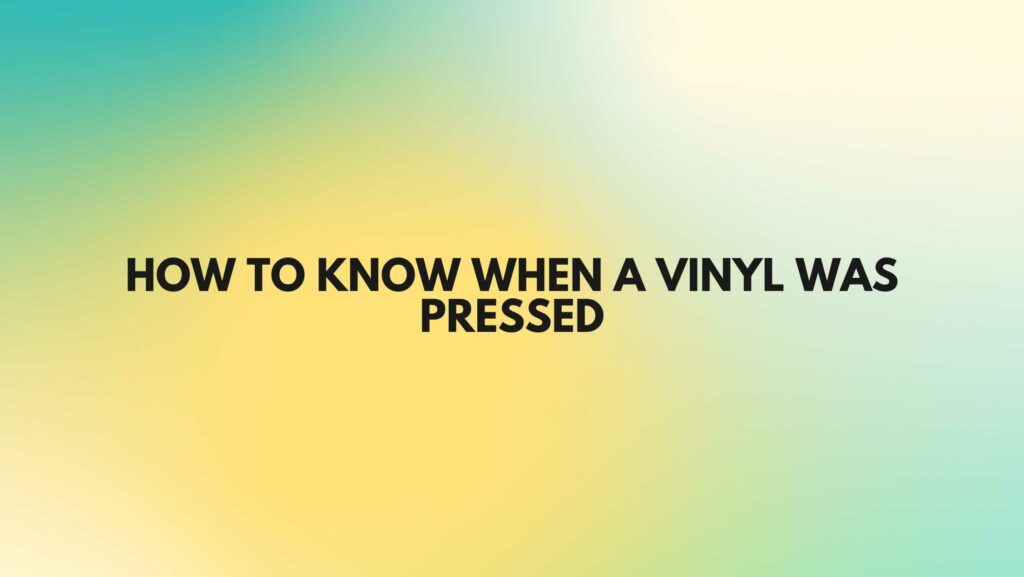Vinyl records have been a cherished medium for music lovers for decades, offering a tactile and analog listening experience. Collectors often seek not only the music but also the history and uniqueness of each vinyl record, including its pressing date. Knowing when a vinyl record was pressed can provide valuable insights into its rarity, sound quality, and historical significance. In this comprehensive guide, we will explore various methods and clues to help you determine the approximate pressing date of a vinyl record.
- Examine the Label
The record label can be a valuable source of information when dating a vinyl record. Look for the following details:
a. Catalog Number: The catalog number, often found on the label, is a unique identifier for each release. Research this catalog number online to find release details and pressing dates.
b. Label Design: Record labels often change their designs over time. Compare the label’s design, typography, and logo to known variations used by the same label during different eras.
c. Color Variations: Some labels used specific color variations during certain time periods. If your record label has a unique color scheme, it can be indicative of a specific era.
- Check the Run-Out Grooves
The run-out grooves, the area closest to the center of the record, often contain etchings or matrix numbers that can provide crucial information:
a. Matrix Numbers: These alphanumeric codes are typically etched into the run-out grooves during the mastering and pressing process. Matrix numbers often include date codes or other identifiers that can help date the record.
b. Mother and Stamper Codes: Look for codes that indicate the mother and stamper used in the pressing. Sometimes, these codes include date information.
c. Research: Use the matrix numbers to research the record’s origin. Online databases and collector communities may have compiled data on matrix numbers and their corresponding pressing dates.
- Sleeve and Cover Art
The artwork on the record sleeve or cover can offer clues about when the record was pressed:
a. Copyright Dates: Check for copyright dates on the cover or sleeve. While the copyright date doesn’t always match the pressing date, it can provide a general timeframe.
b. Album Design and Typography: Similar to labels, album cover designs and typography can change over time. Compare the artwork to known variations from the artist or label.
- Collector Resources
Online resources and collector communities can be invaluable when trying to determine the pressing date of a vinyl record:
a. Discogs: The Discogs database contains a vast collection of vinyl records with detailed release information, including pressing dates. You can search by catalog number, matrix number, or label.
b. Vinyl Forums: Participate in vinyl collector forums and discussion groups. Experienced collectors may share insights and knowledge about specific pressings and their dates.
- Historical Context
Consider the historical context of the record. If you’re dealing with a vintage record, research the artist’s career and the label’s history to gain a better understanding of when the record was likely pressed.
- Manufacturer Information
Some record manufacturing plants used codes or labels that can help determine the pressing date. Research these codes or labels associated with the pressing plant that manufactured the record.
Conclusion
Determining the pressing date of a vinyl record can be both an art and a science, requiring a combination of research, attention to detail, and a keen eye for clues. By examining the record label, run-out grooves, cover art, and leveraging online resources and collector communities, you can narrow down the timeframe and gain a better understanding of the history of your vinyl record. This knowledge can enhance your appreciation of the record as a collector and provide insights into its cultural and historical significance.


